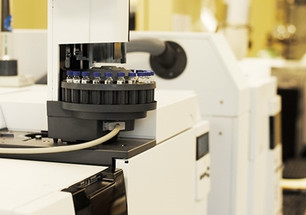10th Nov 2021
What are the Benefits of Glass Vials in the Laboratory?
Chromatography vials are small glass or plastic vessels used in the lab to store and transport samples until they can be analyzed by HPLC or GC. Chances are, if you’re reading this, you probably do some sort of chromatography and are quite familiar with the vials. Both glass and plastic vials are used for chromatography, but how do you choose which vial material is best for your lab?
Benefits of Glass
While both glass and plastic vials are commonly found in the lab, most labs tend to choose glass vials. This is mostly due to the purity of the glass. Chrom Tech’s glass autosampler vials are all created from Type 1 Borosilicate glass, which is high quality glass known to be “chemically neutral”, making it great for sensitive chromatography applications. It is also very heat resistant, and can be heated to over 500 degrees Celsius, which is very beneficial to many labs. For many applications, glass is the best choice to ensure that their vial will not cause interference with the samples and to allow for heating of the samples.
Benefits of Plastic
There are actually multiple types of plastic vials available, but the most popular is polypropylene (PP). Polypropylene is a translucent plastic that is durable and affordable, and is chemically compatible with most HPLC solvents. Many laboratories that opt for plastic vials prefer an economic option for limited volume vials. Polyethylene (PE) vials are less common, but is another type of plastic vial, which is typically used for acids, alcohols, and bases. However, PE is not compatible with benzene, chlorobenzene, or acetic anhydride. The third type of plastic vial we offer is TPX Polymethylpentene, which is more heat and chemically resistant than our other plastic offerings.
Clear vs. Amber (or Black) Vials
Clear vials are most common for both glass and plastic vials. Clear vials are most common, as they make it easy to see the sample inside the vial. However, both glass and plastic are available in amber (or black) for light sensitive samples.
Other Considerations for Choosing a Chromatography Vial
When choosing a chromatography vial for your HPLC or GC application, there are some other factors that play a role in deciding which vial is best for your needs. If your laboratory uses an autosampler, make sure to use autosampler vials compatible with your lab’s autosampler. Typically, these are 12x32 mm vials, but be sure to check your autosampler’s compatibility. It’s also important to consider the size of your sample, and the closure type you’ll need before picking a vial for your lab. For any questions on determining the best vial for your lab, reach out to our sales team for more information.
About the Author

Jess has been with Chrom Tech since graduating from the University of Redlands in 2017 with a BS in chemistry. She works remotely for our team as the marketing coordinator, and spends her personal time exploring the beaches and mountains in California with her dog, Nisswa.

